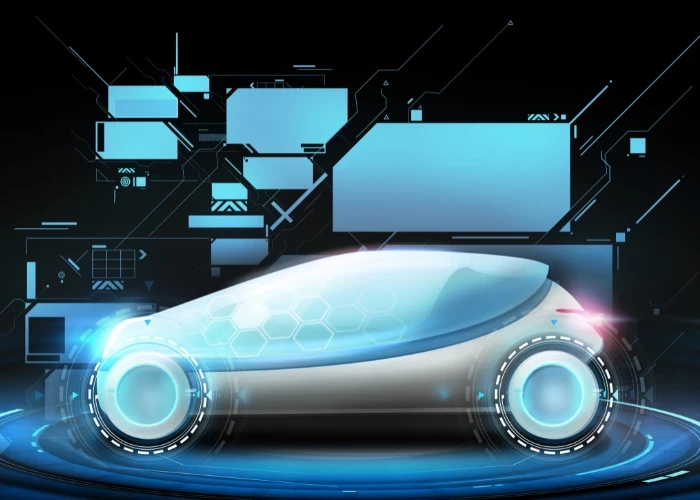Light Suspension Systems - The Conclusion to Our Suspension Series
Add bookmark
American company, Edison 2 LLC, recently unveiled their latest Very Light Car (VLC) at the Henry Ford Museum’s Driving America exhibit. The VLC’s low, wide stance with cycle gear wheels (Not enclosed in the body) is made possible because the patented suspension system, including springs, dampers and universal joint, resides inside the hub on which each wheel is mounted.
Rather than the typical three-point connection of a MacPherson strut, the wheel’s vertical movement/rotation and braking are all transmitted through a very robust single fixed-connection point on each wheel. Each machined aluminum in-wheel suspension unit (the brake rotors are steel) only weighs 5.5 kg.
This one innovation has simplified the entire vehicle structure and, thanks to mass-decompounding effects, significantly reduced the curb and unsprung weight.
Taking the in-wheel suspension a step further is French tire giant, Michelin, which showcased its innovative Active Wheel technology at the 2012 Goodwood Festival of Speed.
Image credit: Michelin
The Michelin Active Wheel is a standard wheel that houses a pair of electric motors: One of the motors drives and brakes the wheel while the other acts as an active suspension system to improve comfort, handling and stability. The Active Wheel technology also reduces vehicle weight by eliminating the gearbox, clutch, drive shaft, universal joint and anti-roll bar.
The active suspension is controlled via a gear rack and pinion which replaces the normal hydraulic shock absorber. The coil spring supports the static load of the car as well as a small disc brake.
Each wheel weighs 42Kg including the 25Kw water-cooled drive motor; similar in size to a conventional starter motor.
Motor vehicles have always relied on coil, leaf or air springs to absorb the energy created by the vertical movement of the wheel, however an interesting alternative could be the Hybrid Micro-Composite E-Spring entered in Tech Brief’s 2013 "Create the future" design competition.
Invented by Salah Elmoselhy, the E-spring assembly has a built-in dampening capability that is able to accommodate higher loads and reduce levels of vibration transferred through to the vehicle chassis. The rectangular cross-section spring is formed with two opposing arms linked by a number of bends of different sizes. Each arm end is fitted with a semi-circular cup which is fixed to the wheel assembly and vehicle chassis respectively.
Image credit: www.patentdata.com & www.eng.cam.ac.uk
Key to the sectional elevation view of the semi-active E-spring above:
9 - Cylindrical pin for hinged connection
10 - Tall E-spring for light/mid loading
11 - Short E-spring for heavy loading
12 - Hydraulic damper
The E-shaped spring performs as a variable rate spring, with certain sections deflecting under light loads whilst others compress as the load increases. Furthermore, the E-spring is well suited to fabrication using micro-composites in which the glass fibres and the matrix help dampen vibrations while absorbing energy.
The E-spring overcomes several drawbacks experienced by conventional helical and semi-elliptic multi-leaf springs:
• Weight can be reduced by up to 85%, thereby reducing fuel consumption
• Packaging of the spring takes up to 75% less space
• Variable spring-rates are easily accomplished
• Due to the self-damping properties of the spring a heavy duty hydraulic dampers are no longer required
• The material fatigue performance is superior to steel springs
E-springs can replace steel springs in both passive and semi-active suspension systems in a reliable, simple, and cost-effective way. Due to the E-spring's inherent scalability the applications range from passenger vehicles to heavy trucks.
Lightweight alternatives materials
Unsprung mass is pivotal to the performance of any suspension system and in motorsport high-tech materials such as carbon fibre composites have been used for many years to optimize performance.
The cost of carbon fibre composites (CFC) however, has impeded their use in mass produced passenger cars. Because of this many OEMs resort to lightweight aluminum control arms on high end luxury cars and high volume sports cars.
At the 2013 Shanghai motor show Italian component supplier, Marelli Motori, unveiled a possible solution to the high cost of manufacturing a control arm out of CFC. Their proposed CFC control arm uses a steel or aluminium skeleton. This skeleton is clad in carbon fibre, achieving a weight reduction of more than 40% compared to the traditional steel part (Obviously the reduction over aluminium is slightly less). Although the cost is still slightly higher than the aluminium component the drive to reduce weight in order to meet prevailing emissions legislation may make this a viable solution.
Conclusion
This is one area where, in many aspects, road cars lead high performance race cars.
Although race teams are usually the first to adopt innovative technologies, these technologies are often outlawed when deemed to reduce the reliance on driver skills to win races.
However for the road, any technology that can make cars safer and more comfortable is researched and if suitable, developed further. Therefore it’s not at all surprising to see road cars with sophisticated electronically controlled active suspension while the ultra hi-tech race cars in formula 1 rely on mechanical devices and exotic materials for their suspension.
Peter Els is a technical writer for Automotive IQ
Sources:
- www.racecar-engineering.com – J-Dampers in F1
-
www.levantpower.com/ – GenShock active and regenerative suspension system
-
http://phys.org – 2014 S class Mercedes Benz (Nancy Owano)
-
http://www.compositesworld.com – Very light cars driving the world.
-
Tech Briefs– Create the future competition (2013)









